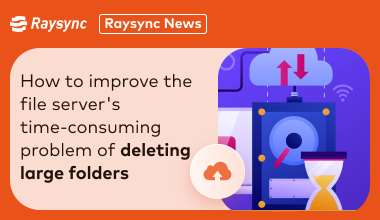File Synchronization Tools Competition 2024
November 3, 2023In today's digital world, file synchronization is a core requirement. Whether it is sharing files between different devices or collaboration between teams, file synchronization tools play a vital role. There are many file synchronization tools available in the market. Below is an introduction to a few of these common tools and a comparative analysis of them to provide readers with a comprehensive understanding.
Tools Introduction
Dropbox: Dropbox is one of the most popular file synchronization tools. It provides a very simple and easy to use way to synchronize files. Just drop a file into a Dropbox folder and the file is automatically backed up and synchronized to any other device logged into the same account. For the first 2GB of data, it's free. If you need more storage space, you can choose to upgrade to the Plus or Professional plan for a nominal fee. In addition, Dropbox has great collaboration features that allow you to share folders with coworkers or friends and update the files in them in real time.
Google Drive: Google Drive is a cloud-based storage service from Google that can be easily integrated with other Google services (e.g., Gmail, Google Docs, etc.). It lets you create, edit, and share documents online, but its main drawback is the lack of a local client, which makes it impossible to use without the internet. In addition, Google Drive has a relatively small storage space of 15.GB and you can't set different permissions for different folders like Dropbox.
OneDrive: OneDrive is a cloud storage service from Microsoft that works perfectly with the Windows operating system. It automatically backs up photos, documents, and other materials and integrates with other Microsoft Office applications. However, it has a relatively small storage space of 5GB and slow upload speeds. In addition, the free version of OneDrive does not support offline synchronization and multi-device synchronization features.
:
Raysync: Raysync is a powerful file synchronization tool that supports local and remote file synchronization, incremental backup, automatic backup, and data recovery. It supports multiple data transfer protocols and file formats and can synchronize files between different operating systems and devices. In addition, Raysync provides large numbers of options and configuration options to customize the settings as needed.
Comparative Analysis of Features
1. Features and Usability
Most cloud storage solutions, such as Dropbox, Google Drive, and OneDrive, offer simple file synchronization features, but are primarily intended for individual users or small teams. These tools have relatively limited functionality and cannot meet large-scale or advanced synchronization needs.
In contrast, Raysync is committed to meeting the needs of large-scale data synchronization and transmission within the enterprise or with external partners, providing efficient and controllable large file transmission, ultra-long distance, and cross-country network data transmission, to meet the needs of data transmission, synchronization, and collaboration in a variety of application scenarios in the enterprise.
2. Performance and Speed
The upload and download speeds of most cloud storage services, such as Dropbox, Google Drive and OneDrive, are limited by the service provider. This can result in slow speeds or capacity limitations when synchronizing a mass of files or large files.
Unlike most of the cloud storage services, Raysync optimizes file transfer based on UDP protocol, which makes its upload and download speeds faster while also supporting intermittent transfer, intelligent retransmission, etc. to fully guarantee the stability of sync transfer.
3. Security and Privacy
For storage services, security and privacy protection is an important consideration. Raysync adopts AES-256 bank-standard encryption technology and TLS data transmission encryption in the transmission process, supports the standard of National Cryptography, the breakpoint resume, error retransmission, multiple file verification (Hash, Rsync check), also supports encrypted storage for the files stored in the server. Guarantee the security of data transmission.
4. Price and Value
Dropbox, Google Drive and OneDrive all offer free versions with limited storage space. If more storage space or more features are needed, users can choose to upgrade to the paid version, but this may increase the cost of use.
Raysync offers a free version, but with more limited features. However, for users who need more features and storage space, it offers a flexible paid version option. Additionally, it supports multiple languages and platforms and supports integrations, making it more widely applicable.
Summary:
Overall, cloud storage services such as Dropbox, Google Drive, and OneDrive have the edge in terms of ease of use and popularity. Raysync shows more competitiveness in terms of features, performance, security, and price. If you are looking for a powerful, fast, and stable file synchronization tool with good security, Raysync is certainly an option worth considering.
You might also like

Raysync News
February 13, 2024File transfer has become an integral part of the financial services industry. Between this paper, it can be will be explored to deal with big data financial services volume in the transmission industry file transfer.

Raysync News
March 22, 2024Handling many files or large folders has become a daily task on file servers. To face this problem, Raysync utilizes its innovative file transfer technology to efficiently handle issues such as the deletion of large folders.

Raysync News
May 5, 2022File Transfer Protocol (FTP) is a widely used network protocol for transferring files between computers over a TCP/IP-based network (such as the Internet).